#Maurice Pivar
Text

Movie Odyssey Retrospective
The Phantom of the Opera (1925)
By the time French journalist-turned-novelist Gaston Leroux published Le Fantôme de l'Opéra as a serial in 1909, he was best known for his detective fiction, deeply influenced by Sir Arthur Conan Doyle and Edgar Allan Poe. The Phantom of the Opera plays out like a Poe work – teeming with the macabre, painted with one character’s fanatic, violent lust. In serial form and, later, as a novel, Leroux’s work won praise across the West. One of the book’s many fans was Universal Pictures president Carl Laemmle who, on a 1922 trip to Paris, met with Leroux. While on the trip, he read Phantom (a copy gifted to him by Leroux) in a single night, and bought the film rights with a certain actor already in mind.
Laemmle’s first and only choice for the role of the Phantom was about to play Quasimodo in Universal’s 1923 adaptation of Victor Hugo’s The Hunchback of Notre Dame. That actor, Lon Chaney, had subsisted on bit roles and background parts since entering into a contract with Universal in 1912. Chaney, who was about to sign a contract with Metro-Goldwyn-Mayer (MGM), became an instant sensation the moment The Hunchback of Notre Dame hit theaters. Audiences and critics in the early 1920s were simultaneously horrified at the sight of his Quasimodo yet, crucially, felt a profound empathy towards the character.
In his prior films, as well as Hunchback, Chaney separated himself from his fellow bit actors with a skill that almost no other actor in Hollywood possessed: he was also a makeup artist. At this time, actors applied their own makeup – often simple cosmetics or unconvincing facial hair. None of the major Hollywood studios had makeup departments in the early 1920s, and it would not be until the 1940s that each studio had such a department. Chaney, the son of two deaf and mute adults, was also a master of physical acting, and could expertly use his hands and arms to empower a scene. Though already bound for MGM, Chaney could not possibly pass up the role of Erik, the Phantom. Despite frequent clashes with director Rupert Julian (1923’s Merry-Go-Round and 1930’s The Cat Creeps; despite being Universal’s most acclaimed director at this time, Julian was either sacked or walked away mid-production), Chaney’s performance alone earned him his place in cinematic history and, for this film, an iconic work of horror cinema and silent film.
As the film begins, we find ourselves at the Palais Garnier, home of the Paris Opera. The Opera’s management has resigned, turning over the Palais Garnier to new ownership. As the ink dries on the contract and as the previous owners depart, they warn about a Phantom of the Opera, who likes sitting in one of the box seats. Soon after, prima donna Carlotta (Virginia Pearson) receives a threatening letter from the Phantom. She must step aside and allow a chorus girl, Christine Daaé (Mary Philbin), sing the lead role in Charles Gounod’s Faust. If she refuses to comply, the Phantom promises something horrific. Aware of the letter, Christine the next day confers with her loved one, the Vicomte Raoul de Chagny (Norman Kerry), that she has been receiving musical guidance from a “Spirit of Music”, whom she has heard through the walls of her dressing room. Raoul laughs this off, but a series of murderous incidents at that evening’s production of Faust is no laughing matter. Christine eventually meets the shadowy musical genius of the Phantom, whose name is Erik (Chaney). In his subterranean lair, he professes his love to her – a love that will never die.
Rupert Julian’s The Phantom of the Opera also stars Arthur Edmund Carewe as the Inspector Ledoux (for fans of Andrew Lloyd Webber’s musical version, this is the Madame Giry character); Gibson Gowland as Simon Buquet; and John St. Polis as Raoul’s brother, the Comte Philippe de Chagny.
Before extoling this film, one has to single out Mary Philbin and Norman Kerry as the glaring underperformers in this adaptation. Philbin would become a much better actress than she displays here, if The Man Who Laughs (1928) is any indication. Yet, Philbin’s Christine is a blank slate, devoid of much personality and interest. It also does not help that Norman Kerry plays Raoul in a similar fashion. Raoul, in any adaptation of Phantom, tends to be a boring role. But goodness me, for a B-actor who was acclaimed for his tall, dark, and handsome looks and screen persona, he is a charisma vacuum here. During Kerry’s more intimate scenes with Philbin, you may notice that Kerry has a case of “roving hands” when he gets close with Philbin. Philbin, who could not visibly react to these moments on-camera, surreptitiously took Kerry’s hands and held them there to stop the touching.
Philbin is much better when sharing the screen opposite Chaney. Chaney and Philbin both could not stand director Rupert Julian – whom both actors, as well almost all of the crew, regarded as an imposing fraud who knew little about making art and more about how to cut costs (Laemmle appointed Julian for this film in part due to Julian’s reputation for delivering work under budget). There are unconfirmed accounts that after Julian’s departure or removal from Phantom, Chaney himself directed the remainder of the shoot aside from the final climactic chase scene (which was the uncredited Edward Sedgwick’s responsibility). In any case, Philbin’s terror when around Chaney was real. The sets of the Phantom’s lair reportedly spooked her – the subterranean waterways, his inner sanctum. Philbin also received no preparation before the filming of what is now one of the signature moments of the silent film era and all of horror cinema. Her reaction to Lon Chaney’s self-applied makeup – meant to appear half-skin, half-skeletal – was the first time that she saw Chaney’s Phantom in all his gruesomeness. Philbin, freed of the innocent, pedestrian dialogue of the film’s opening act, gifts to the camera one hell of a reaction, fully fitting within the bounds of silent film horror.
There are conflicting records on how Chaney achieved the Phantom’s final appearance. The descriptions forthcoming are the elements that freely-available scholarship generally accepts as true. It appears that Chaney utilized a skull cap to raise his forehead’s height, as well as marking deep pencil lines onto that cap to accentuate wrinkles and his brow. He also raised his cheekbones by stuffing cotton into his cheeks, as well as placing a set of stylized, decaying dentures. Inner-nasal wiring altered the angle of his nose, and white highlights across his face contributed to his skeletal look for the cameras. Cinematographer Charles Van Enger (1920's The Last of the Mohicans, uncredited on 1925's The Big Parade) – who, other than Chaney, was one of the most familiar onset with Chaney’s makeup – claimed that the nasal wiring sometimes led to significant bleeding. Taking inspiration from Chaney’s approach to keeping the makeup artistry hidden from Philbin and others, Universal kept the Phantom’s true appearance a secret from the public and press. The studio advised movie theaters to keep smelling salts ready, in case of audience members fainting during the unmasking scene. According to popular reporting at the time, audience members did scream and faint upon the reveal; a nine-year-old Gregory Peck’s first movie memory was being so terrified of Lon Chaney’s Phantom, that he asked to sleep with his grandmother that evening after he came home.
youtube
Lon Chaney’s tremendous performance allows The Phantom of the Opera to soar. Arguably, it is his career pinnacle. Masked or unmasked, Chaney’s Phantom dominates the frame at any moment he is onscreen aside from the film’s final chase sequence. Whether glowering over Christine, majestically gesturing in silhouette, strutting down the Opera House steps during the Bal Masqué, or tucked into the corner of the frame, Chaney’s physical presence draws the audience’s eyes to whatever he is doing. The differences in posture from before and after the unmasking scene are striking – from an elegant specter to a broken, hunched figure (appearing to draw some inspiration from his experience playing Quasimodo two years earlier) seething with pent-up carnality, rage, and sorrow. Chaney’s Phantom garners the audience’s sympathy when he gives Christine the grand tour of his chambers. Look at his posture and hands when he mentions, “That is where I sleep,” and, “If I am the Phantom, it is because man’s hatred has made me so.” That Chaney can ease through these transitions and transformations – as well as a third transformation, as the Red Death during the Bal Masqué – so naturally, without a misstep, is a testament to his acting ability.
Underneath the tortured and twisted visage of a man who has committed horrific acts is a vulnerable and misguided human being. His dreams, dashed and discarded by all others, have turned to despicable means. The role of the Phantom plays brilliantly to Chaney’s genius: to have audiences sympathize with even the most despicable or despondent characters he played. Chaney accomplishes this despite this film characterizing the Phantom with less sympathy than Leroux’s original novel and the popular Andrew Lloyd Webber musical.
This is already on top of Charles Van Enger’s camerawork; the sharp editing from a team including Edward Curtiss (1932’s Scarface) Maurice Pivar (1923’s The Hunchback of Notre Dame), Gilmore Walker (1927’s Uncle Tom’s Cabin), and Lois Weber.
Weber, who in 1916 was Universal’s highest-paid director, underwent numerous financial difficulties over that decade. One of Hollywood’s first true auteurs and largely ignored in the history of film until recently, Weber formed her own production company with Universal’s assistance in 1917, off the success of Shoes (1916). Through World War I, Weber’s movies were popular until around the turn of the decade, when her “didactic” filmmaking (a result of her devout Christian upbringing) went out of style. Most visibly among Weber’s financial failures of the early 1920s, The Blot (1921) – a movie that scholars and Weber himself considered her best – flopped in theaters. After two hiatuses from filmmaking in the early 1920s, Weber was brought in to conduct the final bits of editing on The Phantom of the Opera before returning to directing under Universal.
Though none of the film’s production designers were yet to hit their peak, The Phantom of the Opera benefitted from having a soon-to-be all-star art department including James Basevi (1944’s The Song of Bernadette), Cedric Gibbons (almost any and all MGM movies from 1925 onward), and Robert Florey (1932’s Murders in the Rue Morgue). Inspired by designs sketched by French art director Ben Carré, the production design trio spared no expense to bring Carré’s illustrations to life and used the entirety of Universal’s Soundstage 28 to construct all necessary interior sets. The set’s five tiers of seating and vast foyer needed to support several hundred extras. So unlike the customary wooden supports commonplace during the silent era for gargantuan sets, The Phantom of the Opera’s set for the Palais Garnier became the first film set ever to use steel supports planted into concrete. Basevi, Gibbons, and Florey’s work is glorious, with no special effects to supplement the visuals. The seventeen-minute Bal Masqué scene – which was shot in gorgeous two-strip Technicolor (the earliest form of Technicolor, which emphasized greens and reds) – is the most striking of all, unfurling its gaudy magnificence to heights rarely seen in cinema.
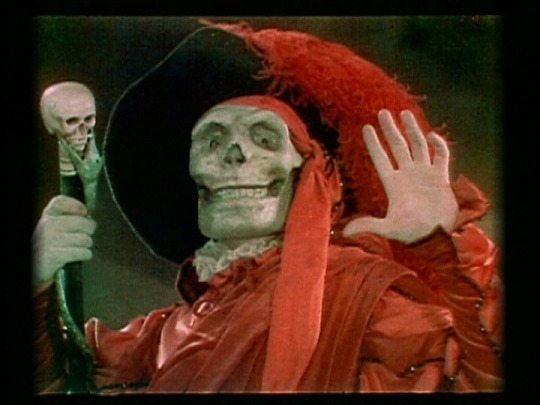
Universal’s Soundstage 28 was an integral part of the VIP tour at Universal Studios Hollywood for decades. Though the orchestra seats and the stage of the film’s Palais Garnier had long gone, the backside box seats of the auditorium remained. Stage 28 featured in numerous films after The Phantom of the Opera, including Dracula (1931), the Lon Chaney biopic Man of a Thousand Faces (1957), Psycho (1960), Charade (1963), Jurassic Park (1993), How the Grinch Stole Christmas (2000), and The Muppets (2011). The soundstage was also supposedly haunted, with individuals claiming to see a caped figure (Lon Chaney as the Phantom?) running around the catwalks, lights flickering on and off, and doors opening and closing on their own. In 2014, after standing for almost ninety years, Universal decided to demolish Stage 28 so as to expand its theme park. However, the historic set escaped the wrecking ball, as Universal decided to disassemble the set, place it into storage, and perhaps someday reassemble it. It is a fate far kinder than almost all other production design relics from the silent era.
Unlike what was coming out of Weimar Germany in the 1920s in the form of German Expressionism, American horror films had no template to follow when The Phantom of the Opera arrived in theaters. There would be no codification of American horror cinema’s tropes and sense of timing until the next decade. But without 1925’s The Phantom of the Opera, Universal would never become the house of horror it did in the 1930s through the early ‘50s (including the Dracula, Frankenstein, Mummy, Invisible Man, Wolf Man, and Creature from the Black Lagoon series). So, unbound by any unwritten guidelines, 1925’s The Phantom of the Opera – a horror film, but arguably also a melodrama with elements of horror – consumes the viewer with its chilling atmosphere and, from Lon Chaney, one of the best cinematic performances ever, without any qualification. For silent film novices, this is one of the best films to begin with (outside the comedies of Charlie Chaplin, Buster Keaton, and Harold Lloyd). Regardless of one’s familiarity with silent film, The Phantom of the Opera is a cinematic milestone.
My rating: 9.5/10
^ Based on my personal imdb rating. My interpretation of that ratings system can be found in the “Ratings system” page on my blog. Half-points are always rounded down.
For more of my reviews tagged “My Movie Odyssey”, check out the tag of the same name on my blog.
This is the twenty-third Movie Odyssey Retrospective. Movie Odyssey Retrospectives are reviews on films I had seen in their entirety before this blog’s creation or films I failed to give a full-length write-up to following the blog’s creation. Previous Retrospectives include Dracula (1931 English-language version), Oliver! (1968), and Peter Pan (1953).
#The Phantom of the Opera#Rupert Julian#Lon Chaney#Mary Philbin#Norman Kerry#Carl Laemmle#Gaston Leroux#Ernst Laemmle#Edward Sedgwick#Arthur Edmund Carewe#Gibson Gowland#Snitz Edwards#Virginia Pearson#Edward Curtiss#Maurice Pivar#Gilmore Walker#Lois Weber#silent film#TCM#My Movie Odyssey
6 notes
·
View notes
Text
THE HUNCHBACK OF NOTRE DAME (1923) – Episode 172 – Decades Of Horror: The Classic Era
“Why was I not made of stone, like thee?” Existentially or metaphysically speaking? Join this episode’s Grue-Crew – Chad Hunt, Daphne Monary-Ernsdorff, and Jeff Mohr along with guest host Michael Zatz – as they visit Cathédrale Notre-Dame de Paris via Universal’s stunning, purpose-built, 19-acre set to discuss The Hunchback of Notre Dame (1923) and Lon Chaney’s star-making role as Quasimodo.
Decades of Horror: The Classic Era
Episode 172 – The Hunchback of Notre Dame (1923)
Join the Crew on the Gruesome Magazine YouTube channel!
Subscribe today! And click the alert to get notified of new content!
https://youtube.com/gruesomemagazine
ANNOUNCEMENT
Decades of Horror The Classic Era is partnering with THE CLASSIC SCI-FI MOVIE CHANNEL, THE CLASSIC HORROR MOVIE CHANNEL, and WICKED HORROR TV CHANNEL
Which all now include video episodes of The Classic Era!
Available on Roku, AppleTV, Amazon FireTV, AndroidTV, Online Website.
Across All OTT platforms, as well as mobile, tablet, and desktop.
https://classicscifichannel.com/; https://classichorrorchannel.com/; https://wickedhorrortv.com/
In 15th-century Paris, the brother of the archdeacon plots with the gypsy king to foment a peasant revolt. Meanwhile, a freakish hunchback falls in love with a gypsy dancer.
Directed by: Wallace Worsley
Writing Credits: Victor Hugo (1831 novel); Perley Poore Sheehan (adaptation) (as Perley Poor Sheehan); Edward T. Lowe Jr. (scenario); Chester L. Roberts (uncredited)
Produced by: Carl Laemmle (uncredited); Irving Thalberg (uncredited)
Editing by: Edward Curtiss (as Edward Curtis); Maurice Pivar; Sydney Singerman
Art Direction by: Elmer Sheeley (as E.E. Sheeley); Sidney Ullman (as Sydney Ullman)
Set Decoration by: Hans Dreier (uncredited)
Costume and Wardrobe Department: Gordon Magee (costume supervisor) (uncredited)
Selected Cast:
Lon Chaney as Quasimodo
Patsy Ruth Miller as Esmeralda
Norman Kerry as Phoebus de Chateaupers
Kate Lester as Madame de Condelaurier
Winifred Bryson as Fleur de Lys
Nigel De Brulier as Don Claudio (as Nigel de Brulier)
Brandon Hurst as Jehan
Ernest Torrence as Clopin (as Ernest Torrance)
Tully Marshall as El Rey Luis XI
Harry von Meter as Mons. Neufchatel (as Harry Van Meter)
Raymond Hatton as Gringoire
Nick De Ruiz as Mons. Le Torteru (as Nick de Ruiz)
Eulalie Jensen as Marie
Roy Laidlaw as Charmolu
Ray Myers as Charmolu’s Assistant (as W. Ray Meyers)
William Parke as Josephus (as William Parke Sr.)
Gladys Brockwell as Sister Gudule
John Cossar as Judge of the Court
Edwin Wallock as King’s Chamberlain
Marion Gray as Woman at Ball (uncredited)
Gilbert Roland as Extra (uncredited)
Lon Chaney Sr. is a legend of classic horror movies. His make-up and monsters are iconic, from Phantom of the Opera (1925) to London After Midnight (1927). Another mind-blowing Chaney character is Quasimodo from The Hunchback of Notre Dame (1923). Join the Grue-Crew and special guest host, Grue-Believer and GM Fan Mikey Z, for their look back at this influential, silent masterpiece.
You might also want to check out these other Classic Era episodes focused on silent screams:
THE CABINET OF DR. CALIGARI (1920) – Episode 13
NOSFERATU (1922) – Episode 21
THE PHANTOM OF THE OPERA (1925) – Episode 42
THE CAT AND THE CANARY (1927) – Episode 60
HÄXAN (1922) – Episode 79
THE PHANTOM CARRIAGE (1921) – Episode 85
THE GOLEM (1920) – Episode 99
FAUST (1926) – Episode 145
DR. JEKYLL AND MR. HYDE (1920) – Episode 160
At the time of this writing, The Hunchback of Notre Dame is available for streaming from Amazon Prime, MGM+, Kanopy, Tubi, Crackle, and PlutoTV. The film is available on physical media as a Blu-ray from Kino Lorber.
Gruesome Magazine’s Decades of Horror: The Classic Era records a new episode every two weeks. Up next in their very flexible schedule, as chosen by guest host “Jose,” is The H-Man (1958), another Toho classic directed by Ishirô Honda. Beware the liquidman!
Please let them know how they’re doing! They want to hear from you – the coolest, grooviest fans: leave them a message or leave a comment on the Gruesome Magazine YouTube channel, the site, or email the Decades of Horror: The Classic Era podcast hosts at [email protected]
To each of you from each of them, “Thank you so much for watching and listening!”
Check out this episode!
0 notes
Photo




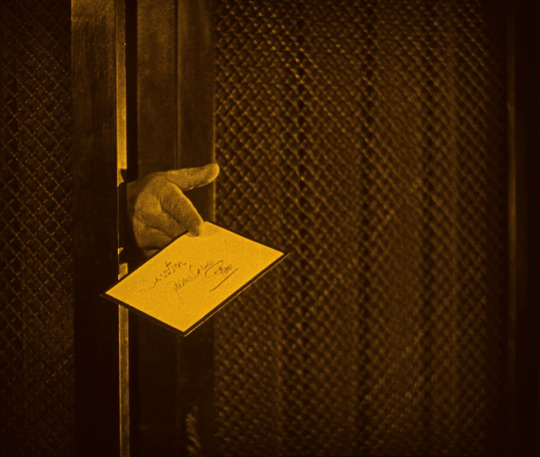


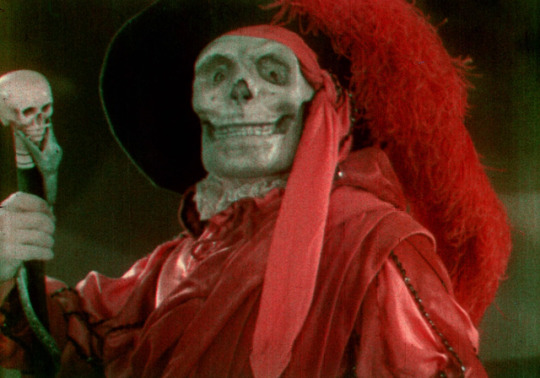


The Phantom of the Opera (Rupert Julian, 1925).
#the phantom of the opera#rupert julian#lon chaney#ernst laemmle#edward sedgwick#gaston leroux#milton bridenbecker#virgil miller#charles van enger#edward curtiss#maurice pivar#gilmore walker#ben carré#charles d. hall#elmer sheeley#russell a. gausman
207 notes
·
View notes
Text
Horror October III: Dracula (1931) - Review
By the way, this isn’t the first film adaptation of Dracula.

The first is actually a 1921 Hungarian silent film called Dracula’s Death (Drakula halála), which is considered somewhat lost today. The second adaptation, and the far more famous one, is F. W. Murnau’s 1922 silent classic Nosferatu, seen above. This is a loose but accurate adaptation, starring no characters from the original film. However, it’s still well-regarded...and I also haven’t seen this one. I AM WORKING ON IT
Anyway, Dracula has been adapted countless times in film and stage adaptations, and the character is truly timeless. Of course, Bela Lugosi’s version of the vampire count reigns supreme to this day, but the character’s been played by Christopher Plummer and Gary Oldman, he’s fought both Batman and the Avengers, and he’s the second most adapted character in film to this day.

And with that...what’d I think of Universal’s version? Well...
Review
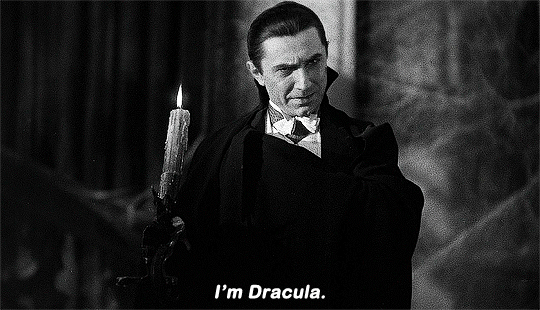
Cast and Acting: 9/10
Once again, first things first: Bela Lugosi absolutely rules in this movie. His turn as the charismatic Count is great, and his turn on the role is extremely iconic for a reason. But unlike in Frankenstein, I don’t really think there are any slouches here! Dwight Frye as Renfield is genuinely my other favorite character in this movie, and Edward Van Sloan’s Van Helsing is a powerful foe to the good Count. And Helen Chandler! WhoO! Sure, she’s a little over-dramatic at times, but she REALLY uses the seductive angle of the vampire to full effect as she’s beginning to turn. She’s very effective! If anyone was a weak point, it’s David Manners and Herbert Bunston, both of whom are...OK. They’re the straight men of the piece, and they’re fine in their roles. Seriously, compared to Frankenstein, these are some strong-ass performances all around.
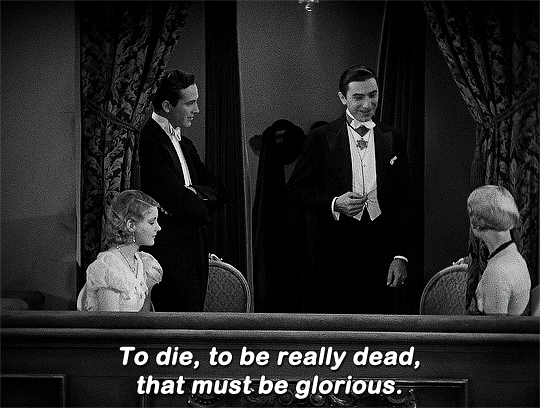
Plot and Writing: 9/10
Unlike Frankenstein, I don’t have a dog in this fight, adaptation-wise. And so, I’m measuring the writing and plot on their own merits. And honestly...kudos to Garrett Fort for this adaptation, because I think he did rather well! The movie seemed streamlined in plot, and it made sense all throughout. There are two major issues I had with it, though. One, the ending, of course. We’ll get to that with pacing, but this was a REALLY abrupt and unsatisfying ending for me. And two, honestly, the comic relief characters. Yeah, I didn’t mention them much, but the guard and nurse really took me out of the whole deal. Really didn’t need to be thrown in there, in my opinion. Other than that, though, it’s entirely solid.

Direction and Cinematography: 9/10
Tod Browning did really well with this movie...but I don’t know if I can say he did better than Whaley, honestly. Cinematographer Karl Freund I think matched up, but Browning didn’t make as much of an impact on me as Whaley did with Frankenstein. I dunno, it just didn’t affect me as much. Still great, but not as memorable for me. Close-up shots and lighting were still great, though. Speaking of...

Production and Art Design: 10/10
Production and art design DEFINITELY match up to Frankenstein, if not surpassing it. To really pull off Dracula, dude and his surroundings have to be grand and bold. And they certainly pulled that off, from his original home in Romania, to the surroundings and trappings of England. This movie looks gothic and dark, and that’s the perfect look for this story.
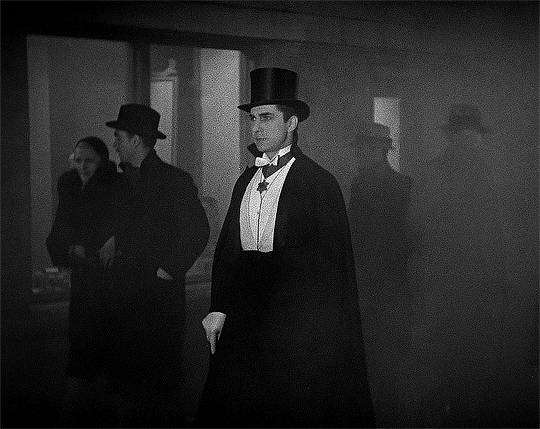
Music and Editing: 8/10
Well...this movie HAS no music. Yeah, outside of Swan Lake in the opening titles and the opera scene, there’s no music in this film. So, OK, what about the editing by Milton Carruth and Maurice Pivar? It’s great, but noticeable in some instances where it shouldn’t be. Still good, but not perfect.

90% definitely works for me. Love this movie.
This is yet another annual tradition established for me! Loving these Universal monster movies, and I want to keep watching them...possibly past October. Yeah, uh...we’ll see. Might actually continue this past October, because I can (and I want to). If anyone has objections, let me know. Anyway, what’s next? Feeling some more movie monsters, honestly. We’ve got vampires and Frankenstein’s Monster, so logically...
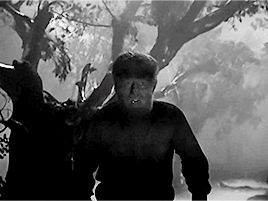
Next: The Wolf Man (1941); dir. Tod Browning
#dracula#dracula 1931#film:dracula#bram stoker#tod browning#bela lugosi#david manners#helen chandler#dwight frye#edward van sloan#horror#horror october#horror genre#horror movie#user365#365days365movies#365moviechallenge#useranimusvox#junkfooddaily#filmedit#useralexander#fireairshadow#classicfilmblr
18 notes
·
View notes
Text



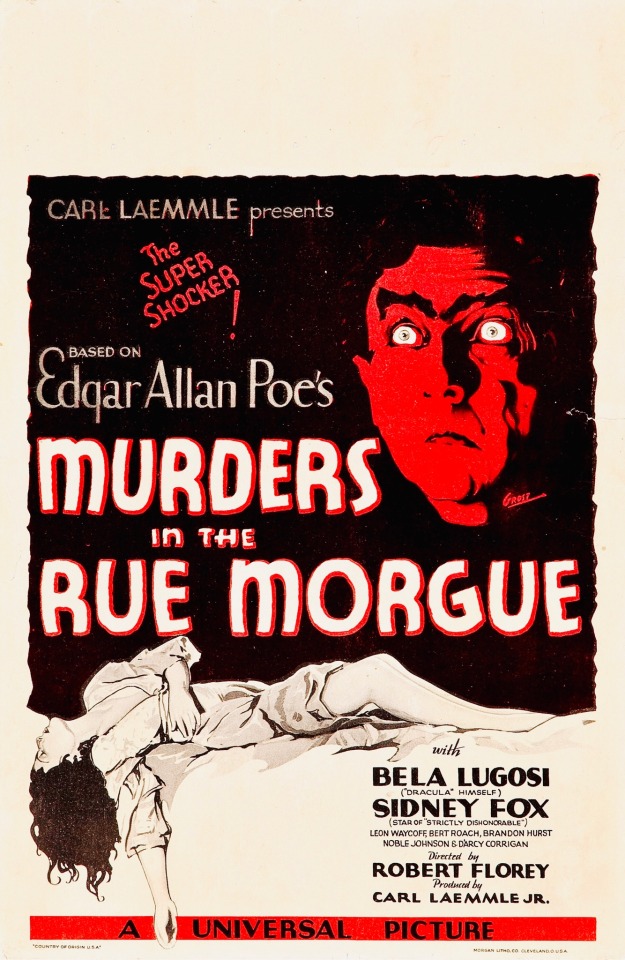
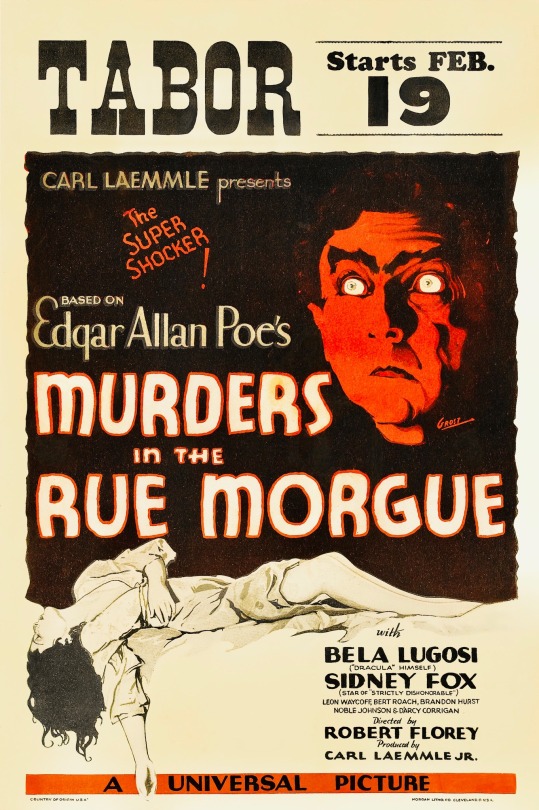

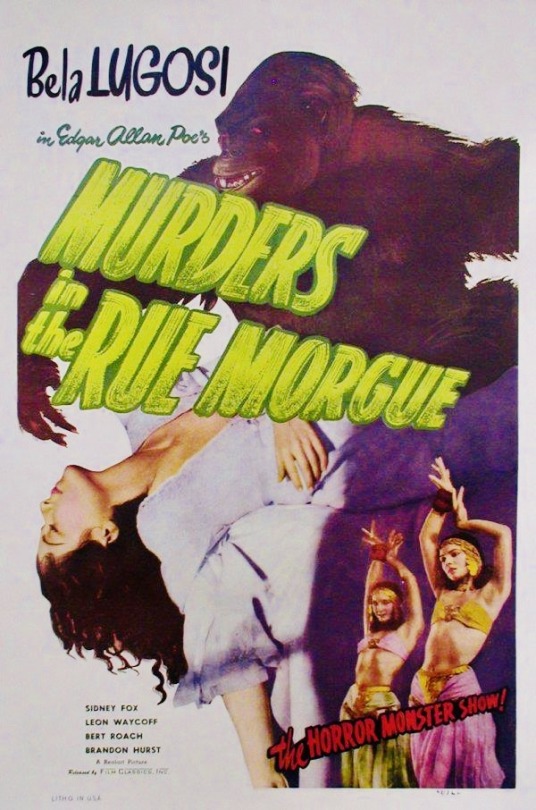



1932
Il Dottor Miracolo Murders In The Rue Morgue (Universal Studios, 1932)
Producer: Carl Laemlle, Jr.
Associate Producer: E.M. Asher
Director: Robert Florey
Assistant Directors: Scott Beal, Joseph McDonough and Charles Gould
Screenplay: Ron Reed and Dale Van Every
Original Story: Edgar Allan Poe
Adaptation: Robert Florey
Additional Dialogue: John Huston
Scenario Editor: Richard Shayer
Art Director: Charles D. Hall
Set Designer: Herman Rosse
Recording Supervisor: C. Roy Hunter
Cinematography: Karl Freund
Editor: Milton Carruth
Supervising Film Editor: Maurice Pivar
Special Effects: John P. Fulton
Special Process: Frank D. Williams
Music Direction: Heinz Roemheld
Make-up: Jack P. Pierce
Technical Adviser: Howard Salemson
Running Time: 62 minutes
Copyright Number: LP2804, January 27 1932
Cast:
Sidney Fox: Mlle. Camille L’Espanaye
Bela Lugosi: Doctor Mirakle
Leon Waycoff: Piere Dupin
Bert Roach: Paul
Brandon Hurst: Prefect of Police
Noble Johnson: Janos, The Black One
D’Arcy Corrigan: Morgue keeper
Betty Ross Clarke: Mme. L’Espanaye
Arlene Francis: Woman of the streets
Edna Marion: Mignette
Charlotte Henry: Girl
Polly Ann Young: Girl
Herman Bing: Franz Odenheimer
Agostino Borgato: Alberto Montani
Harry Holman: Victor Albert Adolph Jules Hugo Louis Dupont, the landlord
Torben Meyer: The Dane
John T. Murray: Gendarme
Dorothy Vernon: Tenant
Christian J. Frank: Gendarme
Michael Visaroff: Mirakle’s sideshow barker
Ted Billings: Sideshow spectator
Charles T. Millsfield: Bearded man at the sideshow
Monte Montague: Workman/Gendarme
Charles Gemora: Erik the ape
Joe Bonomo: Stunt double for Charles Gemora
Harrison Green: Sideshow barker
Tempe Pigott: Crone
Iron Eyes Cody: Indian at sideshow
Charlotte Henry: Sideshow spectator
#il dottor miracolo#murders in the rue morgue#bela lugosi#edgar allan poe#horror movies#film horror#horrormovies#gothic horror#horror film#horrormovie#giallo fever#giallofever#italian cult#cult#cinema cult#italian giallo#italian sexy comedy#international cult#gialli#giallo
4 notes
·
View notes
Photo
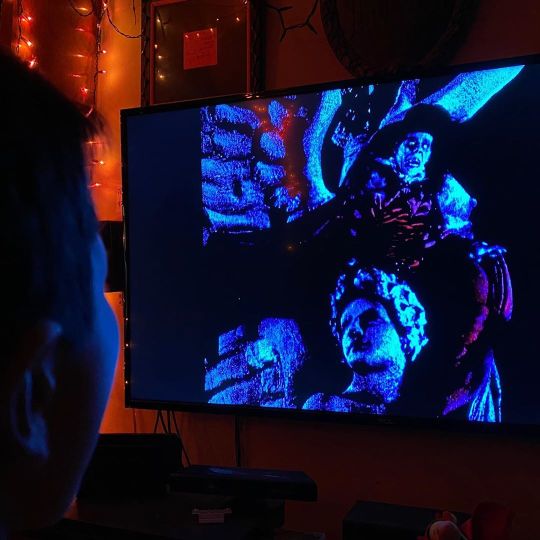
It’s Sunday and today’s Classic for Connor is Universal’s silent gothic horror masterpiece “Phantom of the Opera” starring the great Lon Chaney. The print I’m showing Connor is a restoration of the original 1925 theatrical release complete with hand-painted sequences and the spectacular “Masque of the Red Death” ballroom sequence shot in a then revolutionary two-strip technicolor. This film is a true testament to what great editors can do. Director Rupert Julian and Lon Chaney couldn’t stand each other as Julian wanted a romanticized story (not unlike most remakes) while Chaney wanted a pure horror film, so he ignored the director. The final mishmash was rejected by preview audiences so director Edward Sedgwick was brought in to add comic relief gags, a dueling lovers subplot (that would also appear in the Claude Rains version) and an action ending. This version was hated even more. That’s when editors Lois Weber and Maurice Pivar were brought in to do a complete frame-one retooling, rearranging sequences, removing the new lovers subplot and comic gags (but keeping the new action ending). Their wizardry resulted in a box-office smash - a truly unapologetic dark gothic nightmare that is to this day my favorite version of the story. And yes, Connor got a kick out of it. https://www.instagram.com/p/B6q7k8njK94/?igshid=1k3ixp9823k2s
1 note
·
View note